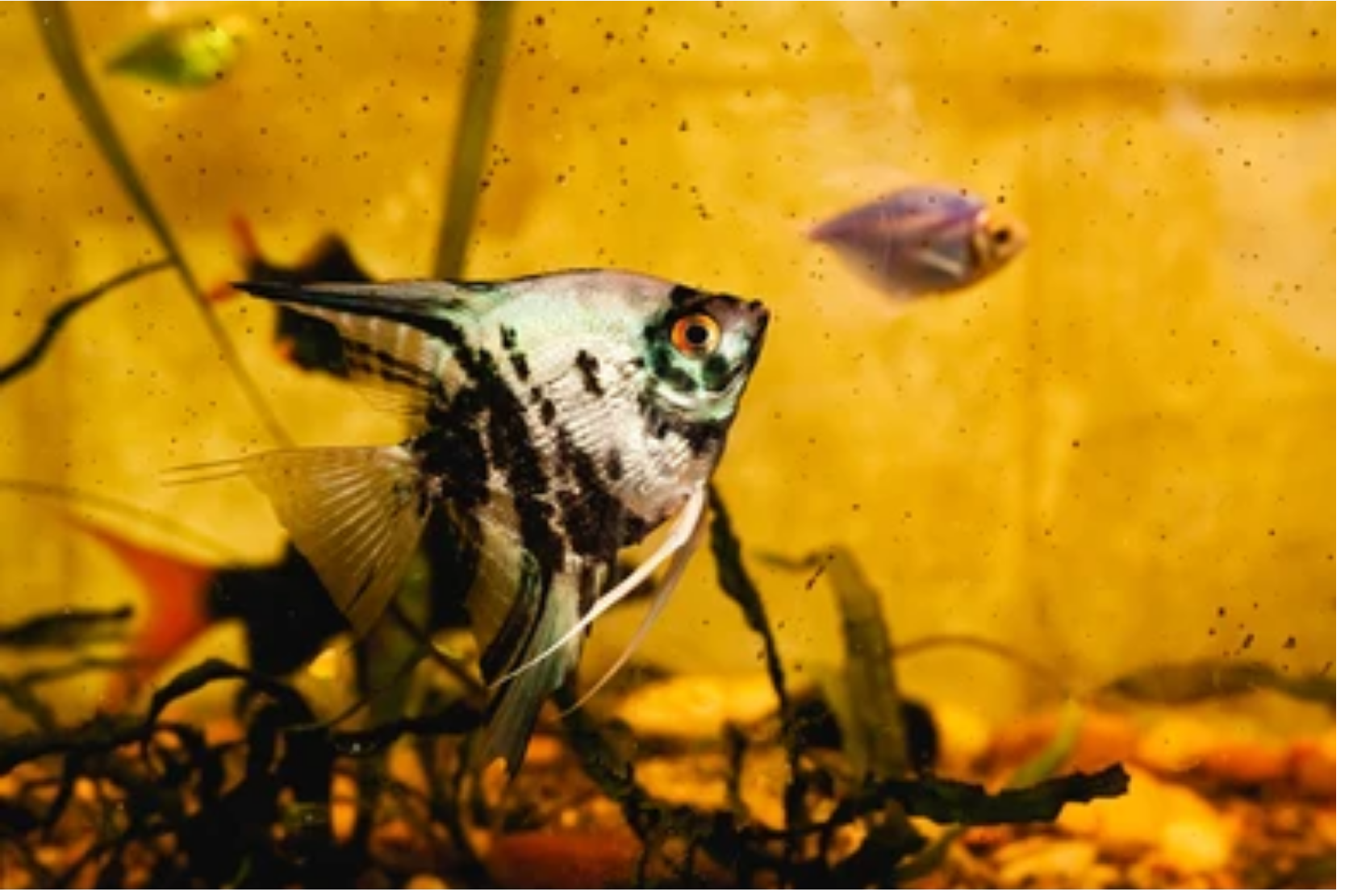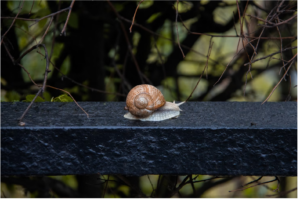If you’re a proud snail owner, you know how important it is to provide your slimy friends with the best possible living conditions. Tannins are known to turn aquarium water from clear to light yellow to dark brown, but what effect do they have on our snail friends? Are tannins bad for snails?
Tannins are not bad for snails; still, the resulting acidic environment may be a long-term concern. The change in water color is primarily an aesthetic issue. However, be mindful of prolonged exposure to an increasingly acidic environment for the health of your snails.
In the rest of this article, I will look closely at tannins and their effects on snails. So, if you are a snail enthusiast or just curious about tannins and their effects on aquatic life, read on to discover everything you need to know about this topic.
How Tannins End Up in an Aquarium
Tannins find their way into aquariums when snail enthusiasts intentionally introduce driftwood, leaves, and other botanicals into the water. It’s essential to note that this is not done to harm the snails in any way.
Since snails are semi-aquatic, they live in water but do not entirely immerse their bodies like fish. Therefore, snail keepers must create a conducive environment that enables their semi-aquatic nature to flourish.
Related Reading: Can Snails Breathe Underwater?
One such environment that snail keepers can create is a paludarium, which is a combination of a vivarium and aquarium. The vivarium provides a secure enclosure for the fish, while the aquarium provides sufficient water to support aquatic life.
To mimic the snails’ natural environment, some people add driftwood, leaves, and other botanicals to these structures.
If you want to learn more about creating the perfect paludarium for your snails, I recommend watching the YouTube video below.
The Zilla Tropical Vertical Habitat Starter Kit is the perfect choice for creating a mini paludarium. It includes a glass terrarium, rock-like foam background, mini halogen dome with bulb, coconut husk bedding, humidity and temperature gauge, feeding dish, and setup guide. It’s easy to access with a front-opening door and hinged lid, making it a convenient and practical choice.
| Preview | Product | |
|---|---|---|

|
Zilla Tropical Vertical Habitat Starter Kit for Small Tree Dwelling Reptiles & Amphibians Like… | Check Price |
Interesting Fact: Did you know that tannins are present in almost all families of plants? Despite this, many aquarium owners believe almonds and oak leaves are the best choice for their tanks.
However, it’s important to note that keeping driftwood and leaves out of water bodies is nearly impossible. Most aquatic animals have grown accustomed to tannins and benefit from their presence in the water.
So don’t worry too much about tannins in your aquarium – your aquatic pets are probably used to them!
How Tannins Affect Your Aquarium
Over time, driftwood and leaves in your aquarium will begin to leach tannins into the water through a natural process that starts when these items decompose. As a result, you will notice a change in the water’s color.
However, the questions remain:
- How significantly will tannins affect the chemistry of your aquarium?
- Is this change harmful?
- Does the water turning from clear to dark brown indicate a serious problem?
- Can tannins cause major fluctuations in your aquarium’s water parameters?
Fortunately, the reality is not as frightening as it might seem. Several studies have shown that the altered chemistry may or may not affect snails and other aquarium inhabitants.
Although tannins cause acidity in the tanks, the acids are relatively weak, and their impacts are significantly less severe.
Furthermore, to have a significant impact on the water parameters, you would need a considerable amount of driftwood in your aquarium, which is not feasible due to most aquariums’ size constraints.
Are Tannins Harmful to Snails in Aquariums?
When it comes to aquariums containing snails and other aquatic animals, the presence of tannins raises several issues to consider.
It is well-known that natural materials can be used to manipulate the aquarium environment and create optimal conditions to support aquatic life. To achieve this, it is necessary to start by considering the pH parameters, which indicate the water’s level of acidity.
Acidity in aquariums generally has little or no impact on snails in the short term. As long as the pH remains below 7, your snails should be safe. If the pH level rises above 7, changing the tank water or removing leaves and driftwood from the aquarium may be necessary to avoid any potential harm.
The Role of Tannins in Aquariums: Understanding Carbonate Hardness (KH) and General Hardness (GH)
If you plan on keeping snails in your aquarium, it’s crucial to consider the impact of KH (Carbonate Hardness) and GH (General Hardness) in their environment.
While these terminologies may seem like chemistry jargon, understanding them is essential to maintain a healthy aquatic environment. Despite their names, GH and KH are not the same. Both terms refer to the concentration of specific minerals dissolved in water, known as hardness.
Carbonate Hardness (KH) refers to the number of calcium carbonates and bicarbonates in solvent form in the water. In contrast, General Hardness (GH) measures the amount of calcium and magnesium in the aquarium in solvent form.
Let’s circle back to our aquariums and their pet snail inhabitants and explore the crucial role that tannins play in pH concentrations.
Tannins introduce acidity into the aquarium, but if the water has a Carbonate Hardness (KH) of more than 5, the decrease in acidity caused by tannic acid will be barely noticeable.
Carbonate Hardness (KH) acts as a neutralizing agent, reducing the acidity in the water, including tannic acid. Essentially, KH acts as a buffer for your tank water’s capacity.
In addition to pH concentrations, tannins also impact the General Hardness (GH) of your aquarium water. As tannins leach into the water, the GH will decrease, resulting in softer water.
That is the exact point where you become worried about the health of your snails.
Freshwater Snails and Hard Water
Freshwater snails tend to thrive in hard water rather than soft water. Hard water contains minerals such as iron and calcium, which are essential for snail growth and development.
On the other hand, soft water is preferred by other species, such as fish and Caridina shrimp, who surprisingly do well in water with a high concentration of tannins.
Related Reading: Will Tap Water Kill Snails?
Summary
The main question I aimed to answer in this article is whether tannins are harmful to snails in aquariums. In general, tannins are not harmful to snails. Still, they can harm animal species that prefer alkaline or hard water conditions.
In the context of a paludarium, it is better to keep snails in an environment that promotes hard water. Tannins alter water pH, and the effects of this depend on the specific species being kept in the aquarium.
Frequently Asked Questions
What is the function of tannins?
Tannins are organic compounds found in driftwood, leaves, and other aquarium decorations. They can provide a natural and aesthetic look to aquariums. Still, they can also affect water chemistry by lowering the pH and creating a tea-colored tint. In addition, tannins can have beneficial effects on fish health by providing antibacterial and antifungal properties.
Can snails live in Blackwater?
Many species of freshwater snails can live in blackwater aquariums, which are characterized by a dark, tea-like color due to the presence of tannins. Some popular species include the mystery snail, Nerite snail, and ramshorn snail. However, it’s important to note that some snails may prefer harder water with a higher pH, so it’s important to research the specific needs of the species you plan to keep.
Will tannins harm plants?
Tannins can have both positive and negative effects on aquatic plants. On the one hand, tannins can provide a natural source of nutrients for plants and create a more natural environment. On the other hand, high levels of tannins can reduce the amount of light that reaches the plants, inhibiting their growth.
Are tannins good for planted tanks?
In moderation, tannins can be beneficial for planted tanks. Tannins can help reduce algae growth by lowering the pH and limiting the availability of nutrients algae need to grow. Additionally, tannins can provide a source of natural carbon for plants. They can have anti-inflammatory and antifungal properties that benefit fish and other aquatic inhabitants.
What are the benefits of a Blackwater tank?
Blackwater aquariums can provide a more natural and visually appealing environment for fish, with the dark, tea-like color created by tannins mimicking the waters found in many tropical regions. Additionally, tannins can benefit fish health by reducing stress and providing antibacterial and antifungal properties.



